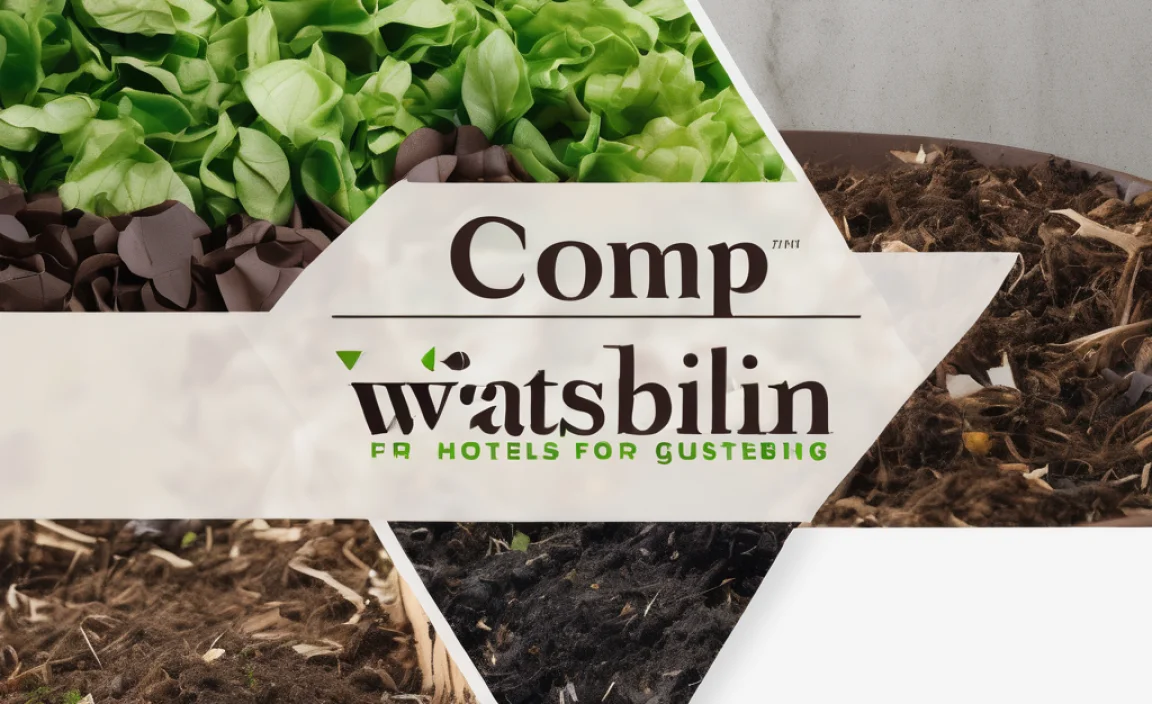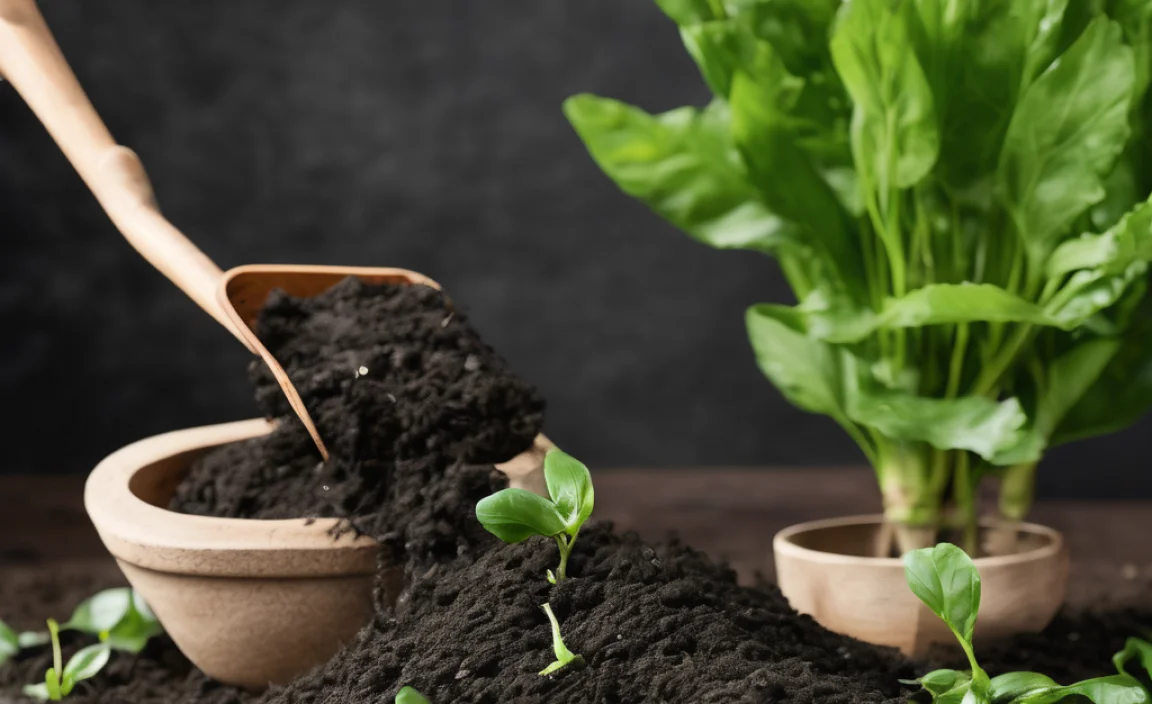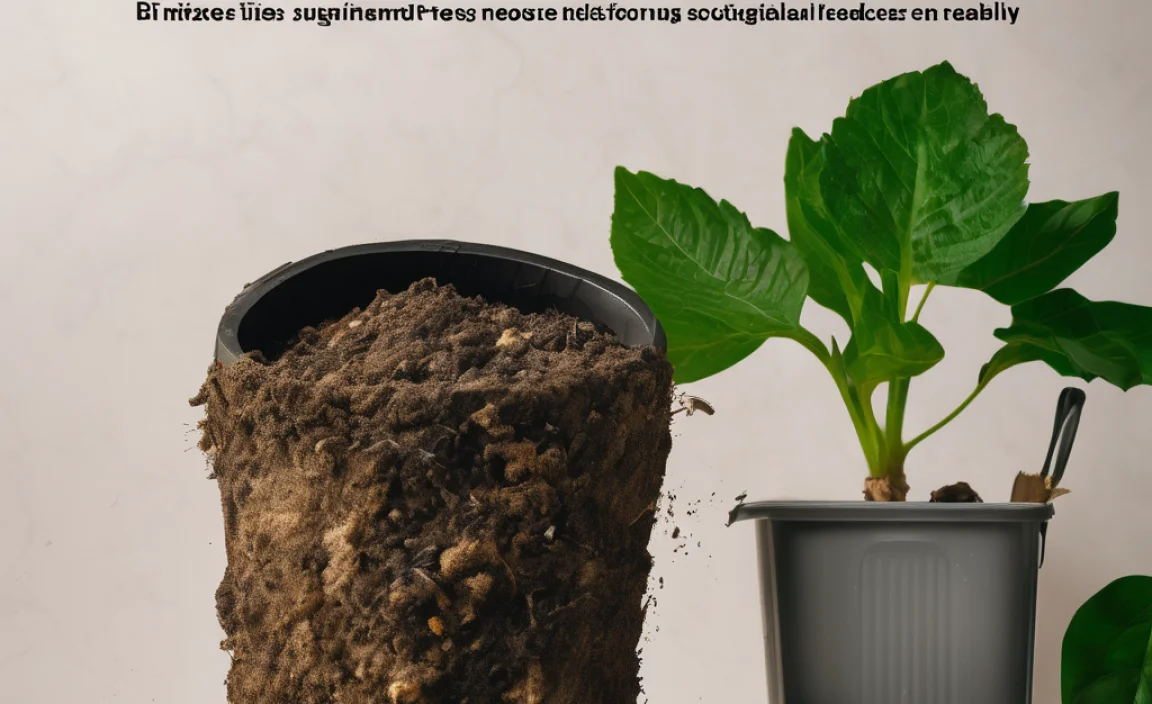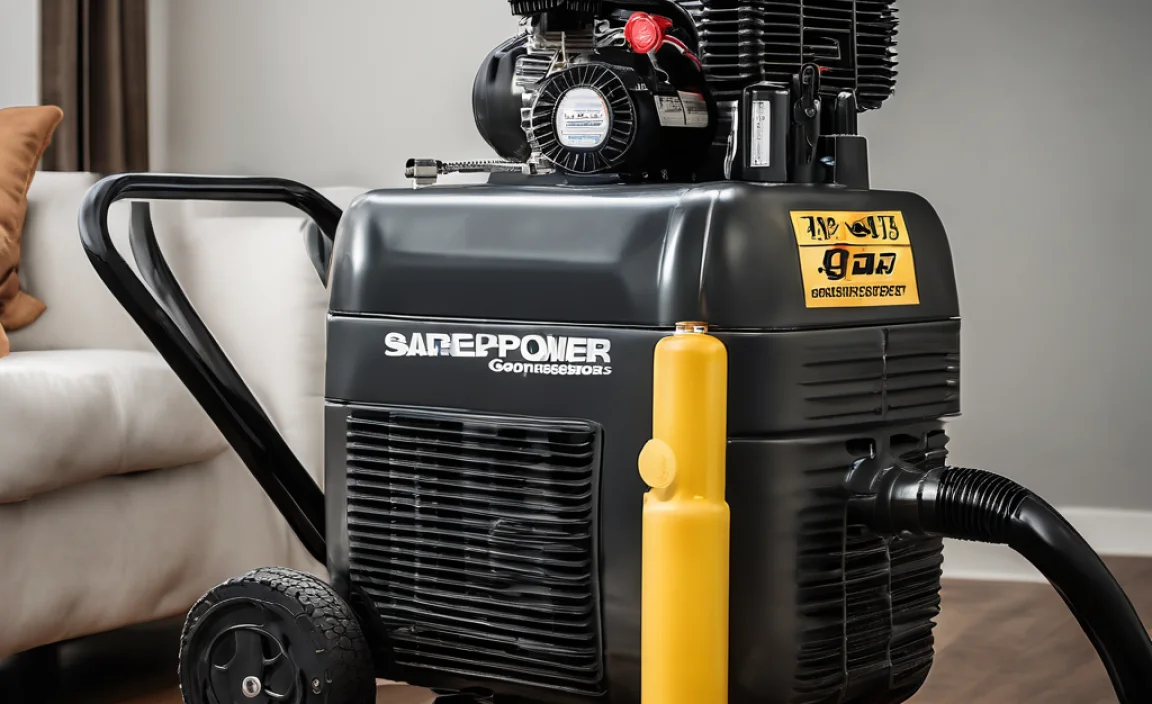Hey everyone, Troy D Harn here from TopChooser! Ever feel like your office is drowning in coffee grounds and paper scraps? It’s a bummer, right? That wasted potential right there in your breakroom bin. But what if I told you there’s a super simple way to turn that office waste into something awesome? You absolutely can start composting at your office. It’s easier than you think, and I’m going to walk you through it, step by step. Get ready to be a composting hero at work!
Why Your Office Needs a Composting Program (And How to Start It)
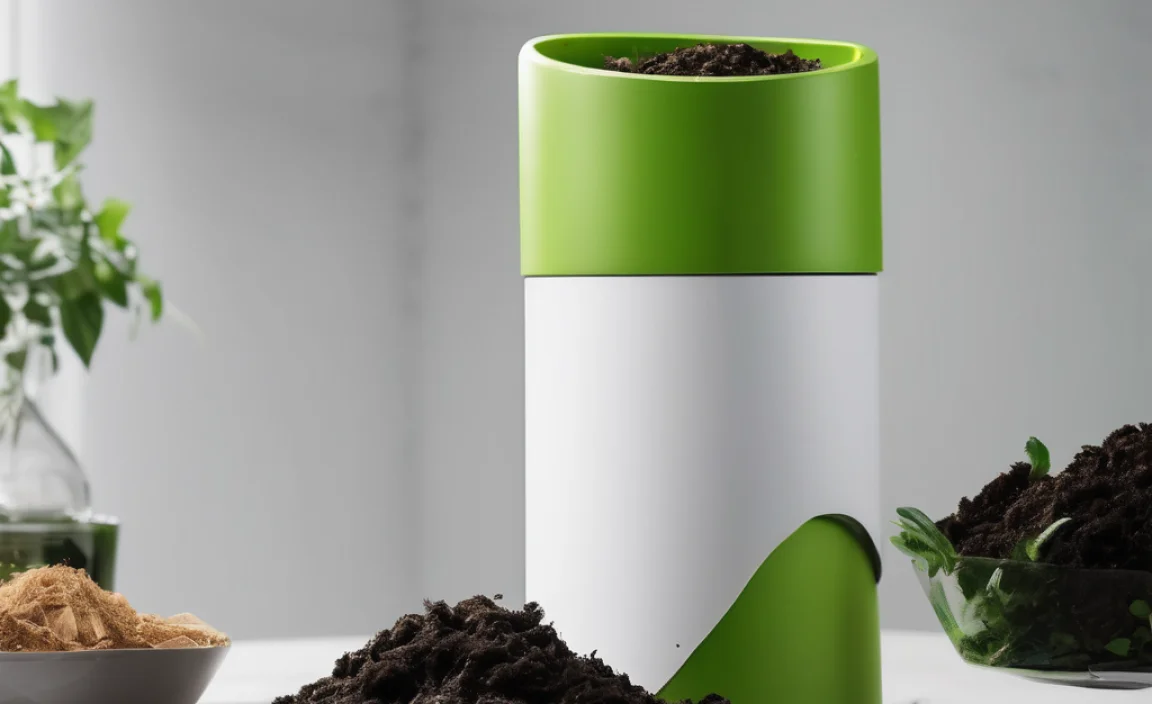
Let’s face it, offices generate a surprising amount of waste that can be composted. Think about all those coffee filters, tea bags, fruit peels from snacks, and even paper towels. Tossing them in the regular trash means they end up in a landfill, creating harmful greenhouse gases. But there’s a better way! Setting up an office composting program is a fantastic way to reduce your company’s environmental footprint, boost morale, and even create valuable compost for local gardens or office plants. It might sound complicated, but trust me, it’s totally doable with a little planning and the right approach. We’ll break down the entire “composting for offices process” so you can feel confident tackling it.
The “What, Why, and How” of Office Composting
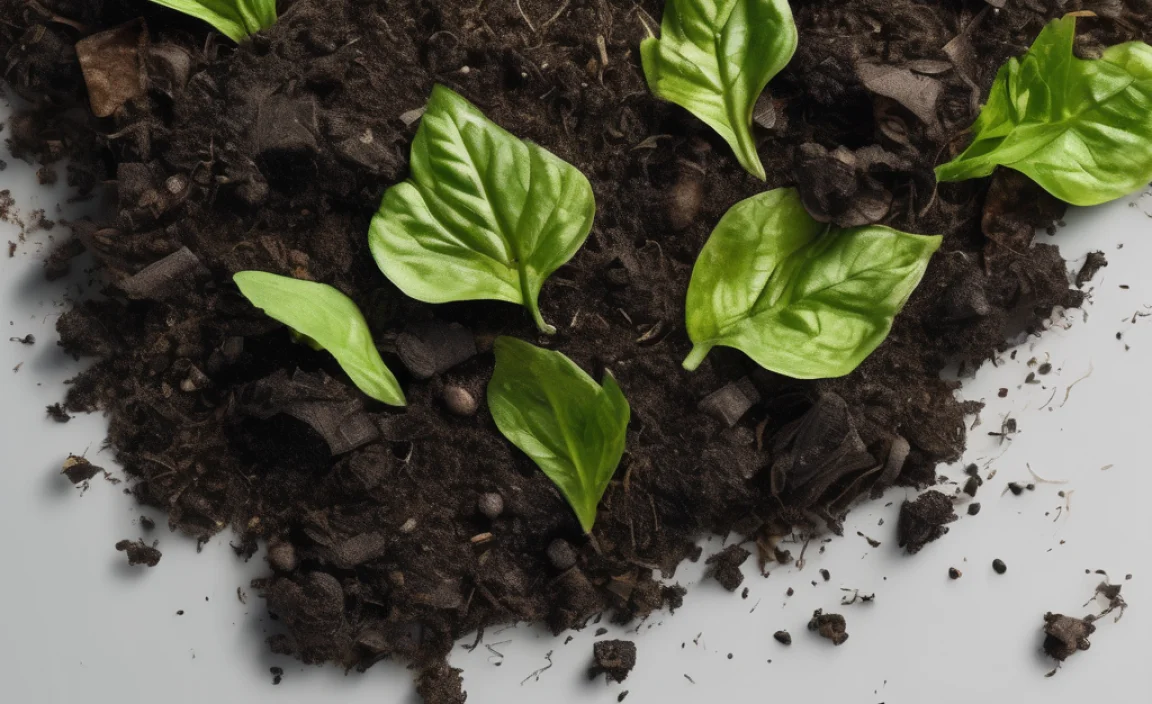
Composting is nature’s way of recycling organic materials. It’s breaking down things like food scraps and yard waste into a nutrient-rich soil amendment called compost. For an office, this means diverting a huge chunk of your waste away from landfills.
Here’s a quick rundown of why it’s a game-changer:
- Reduces Landfill Waste: This is the big one. Less trash means a smaller environmental impact.
- Cuts Down on Harmful Gases: Organic matter in landfills decomposes anaerobically, producing methane, a potent greenhouse gas. Composting is an aerobic process, much cleaner.
- Creates Valuable Resources: Compost enriches soil, helping plants grow healthier and stronger.
- Boosts Company Image: Shows your company is environmentally responsible and forward-thinking.
- Improves Employee Morale: People feel good about working for a company that cares about the planet.
Getting started involves a few key steps: getting buy-in, setting up the system, educating your colleagues, and maintaining it. We’ll dive into each of these!
Step 1: Get Your Office On Board
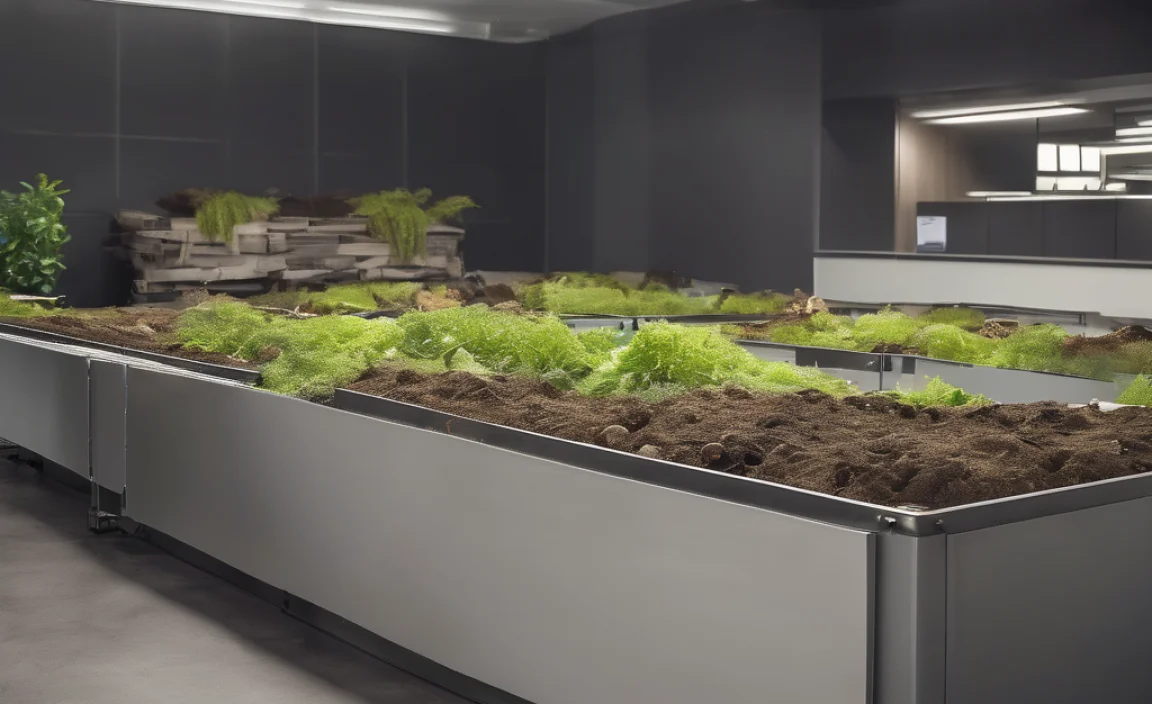
This is probably the most crucial step. You can have the best composting bins in the world, but if no one uses them, it won’t work. You need to make a case for composting to the powers that be – your boss, facilities manager, or HR department.
Here’s how to approach it:
- Gather the Facts: Research the benefits specific to your company. How much waste are you generating? What’s the cost of waste disposal? How could composting save money or improve your company’s green credentials? You can often find waste audit guides from local government waste management services. For example, the EPA has great resources on reducing and reusing waste.
- Highlight the Positives: Focus on the environmental benefits, the potential for cost savings, and the positive PR.
- Propose a Pilot Program: Suggest starting small, perhaps with just one department or the breakroom, to test the waters. This makes it less intimidating.
- Address Concerns: Be ready to answer questions about cost, space, smell, and maintenance. Have practical solutions ready.
Once you have approval, you can start planning the nitty-gritty.
Step 2: Design Your Office Composting System
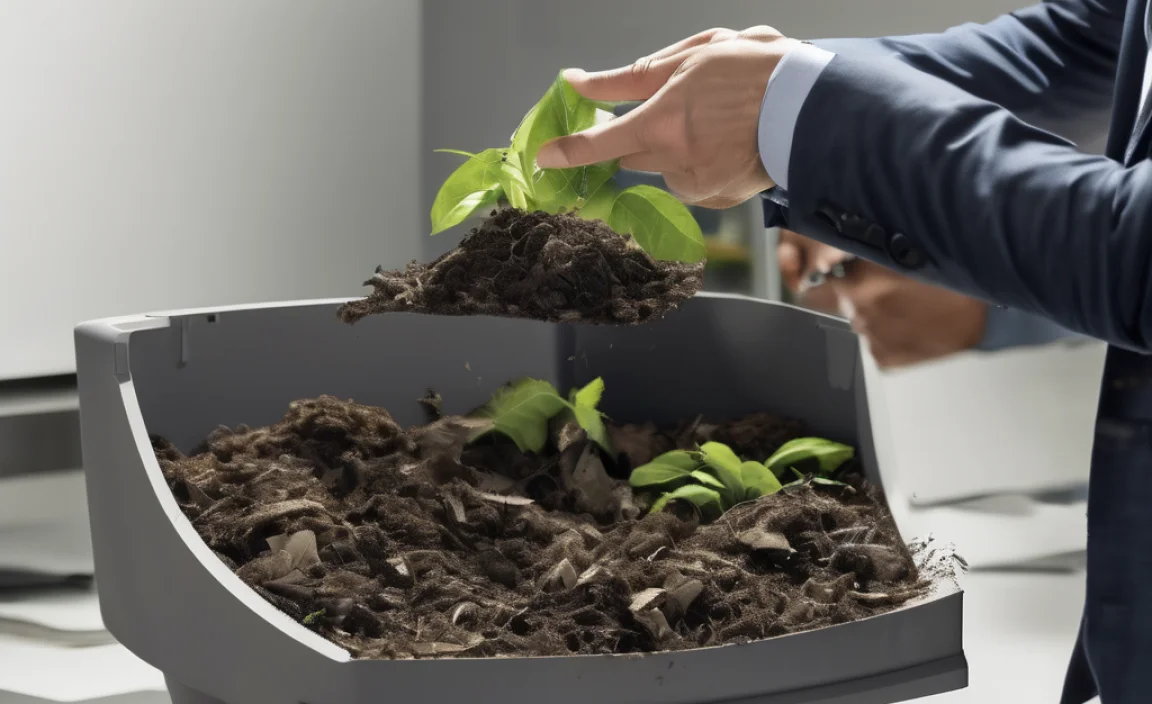
The best system for your office depends on your space, budget, and the amount of organic waste you produce. You have a few main options:
Option A: Work with a Commercial Composting Service
This is often the easiest and most hassle-free option for offices. You partner with a local company that provides specialized bins and picks up your compostable waste on a regular schedule.
Pros:
- Minimal effort from your staff.
- No need to manage the compost yourself.
- Often designed to handle larger volumes.
Cons:
- Can be the most expensive option.
- Less direct control over the composting process.
How to find one: Search online for “commercial composting services [your city/region]”. Many municipalities also have lists of local providers.
Option B: In-Office Composting Bins (for smaller scale or employee-led initiatives)
If you have enthusiastic volunteers or a smaller office, you might manage your own composting bins within the building. This requires more hands-on effort but can be very rewarding.
What you’ll need:
- Collection Bins: Small, lidded bins (like countertop compost bins or repurposed containers) for kitchens, breakrooms, and individual desks or work areas.
- Larger Central Bin: A bigger, sealable bin for collecting the material from the smaller bins before processing or pickup.
- Composting Site (if self-managing): This could be an outdoor composter if you have space (e.g., a small office garden area) or a specialized indoor composting system.
Types of self-managed systems:
- Worm Composting (Vermicomposting): Uses red wiggler worms to break down food scraps. Great for smaller spaces, minimal odor if managed properly. You can purchase worm composting bins or build your own. It’s a fascinating process and produces excellent compost!
- Bokashi Composting: This is a fermentation process that pickles food waste using a special bran inoculated with microorganisms. It’s done in an airtight bucket. It doesn’t fully break down the material but pre-composts it, significantly reducing volume and odor, and killing pathogens. The pre-composted material then breaks down much faster in soil or a regular compost pile.
- Traditional Outdoor Composting: If you have an office garden or can partner with a community garden, a standard three-bin compost system or tumblers work well for larger volumes of “greens” (food scraps) and “browns” (paper, etc.).
Option C: Hybrid Approach
Sometimes, a mix works best. You might collect compostable waste in-house and then take it to a designated drop-off location, like a community garden or a local farm that accepts food scraps for their compost.
Step 3: What Can and Can’t Be Composted in an Office Setting
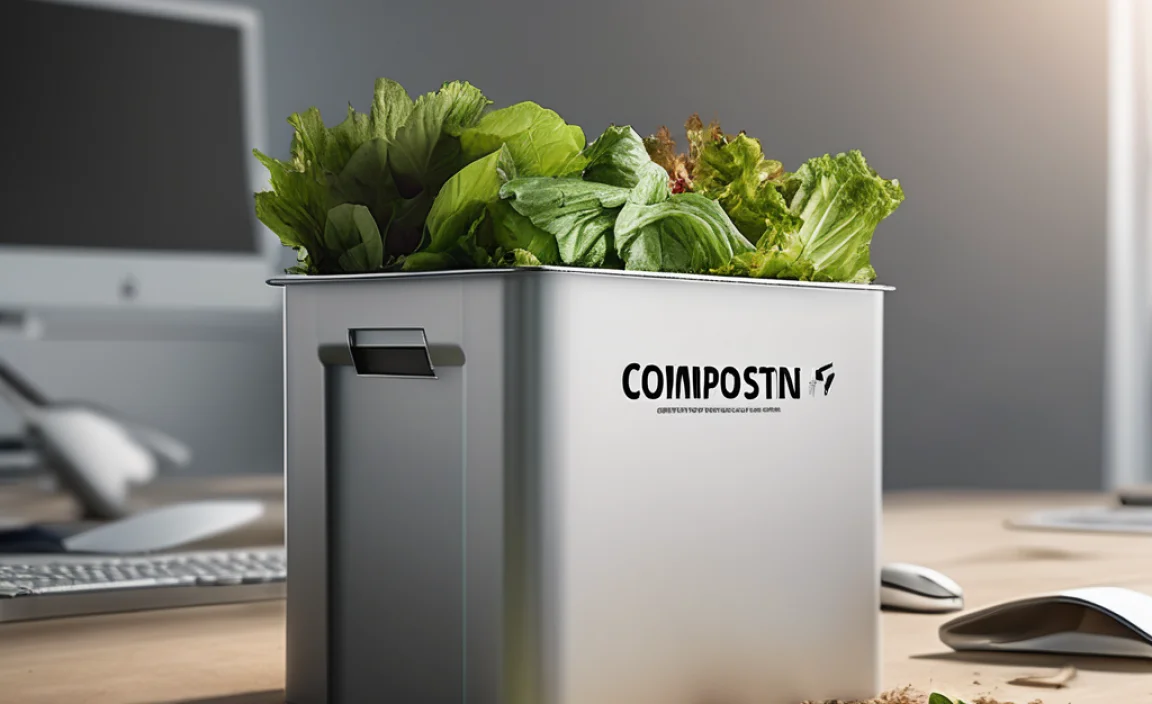
This is super important for success and preventing unpleasantness! Contamination is the enemy of good composting.
YES, Please! (Compostables):
- Food Scraps: Fruit and vegetable peels, cores, and scraps. Coffee grounds and filters. Tea bags (remove staples). Bread, pasta, rice (in moderation, especially if not commercially composted).
- Paper Products: Paper towels, napkins (if not soiled with harsh chemicals). uncoated paper receipts. Cardboard (torn into small pieces, no glossy finishes).
- Other: Hair and nail clippings. Plant trimmings from office plants.
NO, Thank You! (Non-Compostables):
- Meat, Fish, Dairy: These can attract pests and create strong odors, especially in an office setting where management might be limited. Commercial composters might accept some of these, so check with your provider.
- Oils, Fats, Greasy Foods: Same reasons as meat/dairy.
- Diseased Plants: Can spread disease.
- Pet Waste: Contains pathogens.
- Plastic, Styrofoam, Metal, Glass: These are not organic and will not break down.
- Chemically Treated Paper Products: Like glossy flyers or paper towels used with harsh cleaning agents.
- “Compostable” Packaging: VERY IMPORTANT! Many items labeled “compostable” or “biodegradable” only break down in specific industrial composting facilities. They won’t break down in a backyard or worm bin. Always check with your composting service if they accept these. A good rule of thumb in an office is to avoid them unless explicitly cleared.
Here’s a handy table to keep at your collection points:
| Can Compost (Greens & Browns) | Avoid (Contaminants) |
|---|---|
| Fruits & Veggies | Meat, Fish, Dairy |
| Coffee Grounds & Filters | Oils, Grease, Fats |
| Tea Bags | Diseased Plants |
| Paper Towels & Napkins (clean) | Pet Waste |
| Uncoated Paper Receipts | Plastics, Metal, Glass |
| Torn Cardboard (no gloss) | “Compostable” packaging (unless approved) |
| Office Plant Trimmings | Chemically treated paper |
Step 4: Education and Communication is Key
You’ve got the approval, the bins, and the know-how. Now, you need to get your colleagues excited and informed!
Create Clear Signage: Post the “What Can and Can’t Be Composted” table clearly above every collection bin. Use simple icons and easy-to-understand language.
Launch an Awareness Campaign:
- Email Announcement: Send out a friendly email explaining the new initiative, why it’s important, and how to participate. Include a link to more detailed information (like this article!).
- Briefing Sessions: Ask for a few minutes in team meetings to explain the program. Answer questions directly and enthusiastically.
- Training Posters: Display informative posters in the breakroom and near waste stations.
- Designate “Compost Champions”: If possible, identify a few people in different departments who are enthusiastic about the program and can help answer colleagues’ questions and gently remind them about proper sorting.
Make it Easy: Place clearly labeled compost bins right next to the regular trash and recycling bins. If it’s a hassle, people won’t do it.
Step 5: Collection and Maintenance
This step varies depending on the system you choose.
If Using a Commercial Service:
- Regular Haul: Ensure the bins are accessible for the pickup service on their scheduled days.
- Bin Cleaning: The service may provide bin liners or occasional cleaning. If not, brief staff on wiping down bins to keep them tidy.
If Self-Managing (e.g., Worm Bin or Bokashi):
- Daily/Weekly Collection: Designate someone or a team to collect scraps from small desk bins into a main office bin.
- Managing the System: This is where the real work happens.
- For Worm Bins: Regularly feed the worms, ensure proper moisture levels, and harvest the finished worm castings. Check for any signs of distress in the worms or excessive odors. Good ventilation is key.
- For Bokashi: Add the Bokashi bran to the compost bin after each food addition. Ensure the lid is sealed tightly. Drain off the “Bokashi tea” (a liquid byproduct) regularly – this can be diluted and used as a potent plant fertilizer!
- For Outdoor Piles: Regularly turn the pile to ensure aeration and mix “greens” (food scraps) with “browns” (paper, cardboard). Keep it moist but not soggy.
- Troubleshooting: Be prepared for occasional issues like odors or pests (more common with outdoor bins). Quick fixes often involve adding more “browns” for dryness or turning for aeration.
Important Note on Odor: A well-managed compost system, especially indoor ones like worm bins or Bokashi, should have minimal to no odor. Odors usually indicate an imbalance (too wet, not enough air, or wrong materials). Lidded collection bins and regular emptying are crucial.
Step 6: Expanding Your Office Composting Program
Once your initial program is running smoothly, you can think about expanding!
- More Bins: Add collection points in other areas of the office.
- Broader Scope: If you started with just breakrooms, consider adding designated bins for specific departments if they generate a lot of compostable waste.
- Employee Gardens: If your company has grounds, use the generated compost to start or maintain an office garden. Even small herb gardens are great!
- Donating Compost: Partner with local community gardens or schools to donate your finished compost. It’s a fantastic way to give back.
- Beyond Food Scraps: Explore accepting more challenging items if your commercial service allows, or if your internal system is robust enough.
Quick Summary: The Office Composting Process at a Glance
Starting composting at your office doesn’t have to be a mountain to climb. Here’s a quick recap of the process:
- Get Buy-In: Secure support from management and highlight the benefits.
- Choose Your System: Decide between a commercial service, in-house bins (worms, Bokashi), or a hybrid.
- Know Your Materials: Clearly define what can and cannot be composted.
- Educate Everyone: Use signage, emails, and meetings to inform and engage colleagues.
- Maintain the System: Regularly collect, manage, and troubleshoot your chosen composting method.
- Expand and Grow: Look for opportunities to improve and broaden your program.
Conclusion: Be the Office Composting Champion!
See? Composting for offices process doesn’t have to be a daunting task. By breaking it down into manageable steps – from getting that initial green light from management to educating your colleagues and choosing the right.
Frequently Asked Questions About Office Composting
Q1: Will office composting smell bad?
A: Not if done correctly! Indoor composting systems like worm bins or Bokashi, when managed properly with the right materials and balance, have very little odor. Using lidded collection bins and emptying them regularly also prevents smells. Odors usually signal an imbalance, which is easily fixed.
Q2: How much does it cost to start composting in an office?
A: Costs vary greatly. Commercial services can be a few hundred dollars a month. Setting up your own worm bin or Bokashi system is much cheaper, often under $100 for initial setup and ongoing supplies like compostable bags or Bokashi bran. The biggest initial cost might be obtaining approval and initial signage.
Q3: What if my office doesn’t have a lot of space?
A: Worm composting (vermicomposting) and Bokashi composting are excellent for small spaces. They can be kept in a breakroom, supply closet, or even under a desk if well-maintained. Commercial services also often have smaller bin options for limited space.
Q4: How do “compostable” packaging items work? Aren’t they good for the environment?
A: This is tricky! Many items labeled “compostable” or “biodegradable” only break down in industrial composting facilities that reach very high temperatures. They often won’t break down in backyard compost bins, worm bins, or even most standard office composting setups. Unless your commercial composting service specifically accepts these items or you have access to an industrial facility, it’s often best to avoid them to prevent contamination.
Q5: Who will be responsible for managing the compost if we do it ourselves?
A: This needs to be decided during the planning phase. It could be a dedicated facilities team member, a volunteer “Green Team,” or even assigned responsibilities on a rotating basis. A clear point person or team is essential for success.
Q6: What if people put the wrong things in the compost bin?
A: This is where clear education and signage are your best friends! Have bin monitors or “Compost Champions” gently remind colleagues. If contamination is a persistent issue, you might need to re-educate the whole office or temporarily remove the bin and re-introduce it with more focused training.
Q7: Can we compost paper towels and napkins?
A: Yes! Clean paper towels and napkins are great “browns” or “greens” for composting. However, avoid those used with harsh cleaning chemicals, as those chemicals can be harmful to the composting process and its end product. For most office breakroom use, they are perfectly fine.

I am passionate about home engineering. I specialize in designing, installing, and maintaining heating, ventilation, and air conditioning systems. My goal is to help people stay comfortable in their homes all year long.

